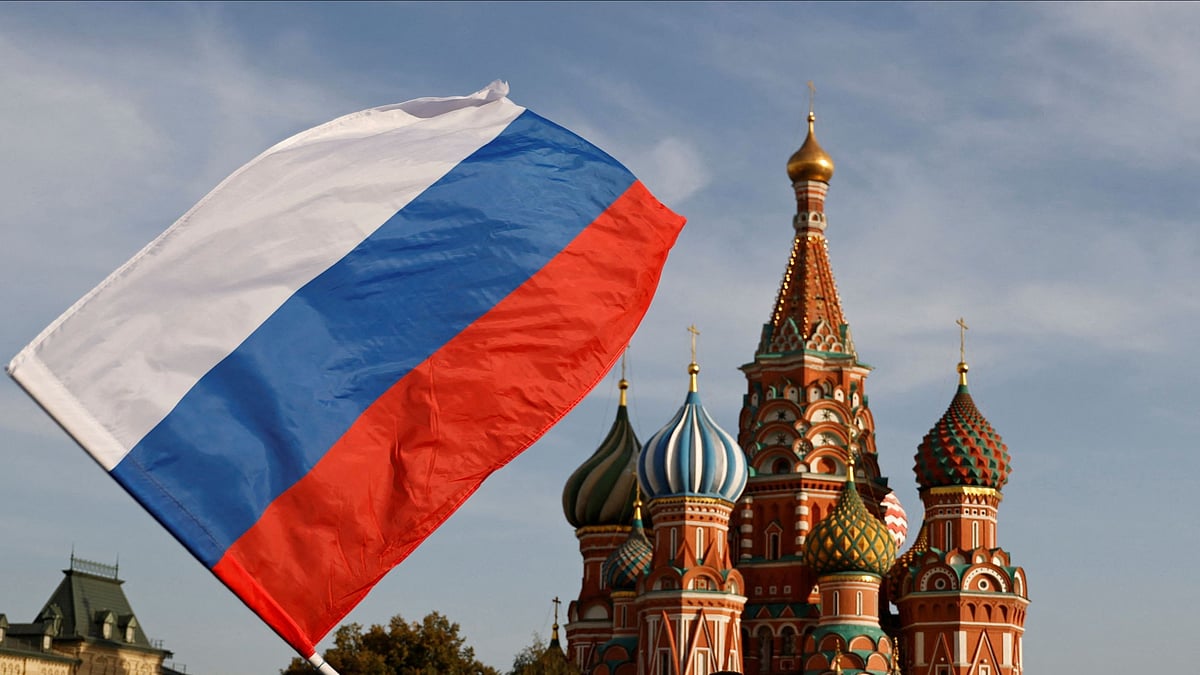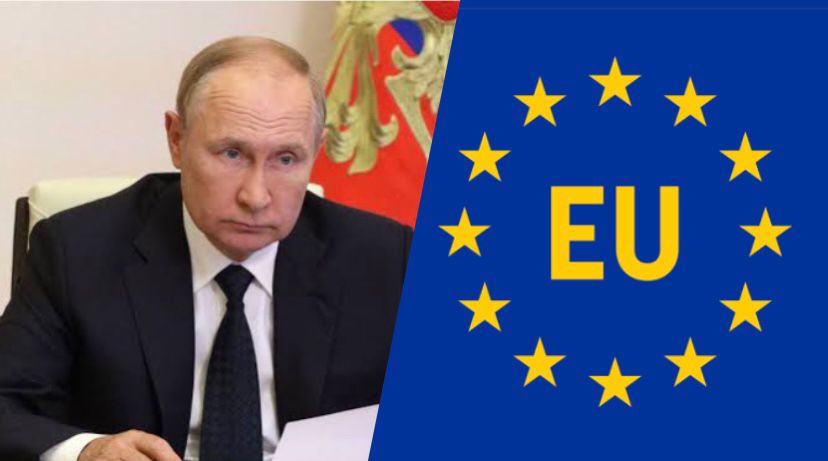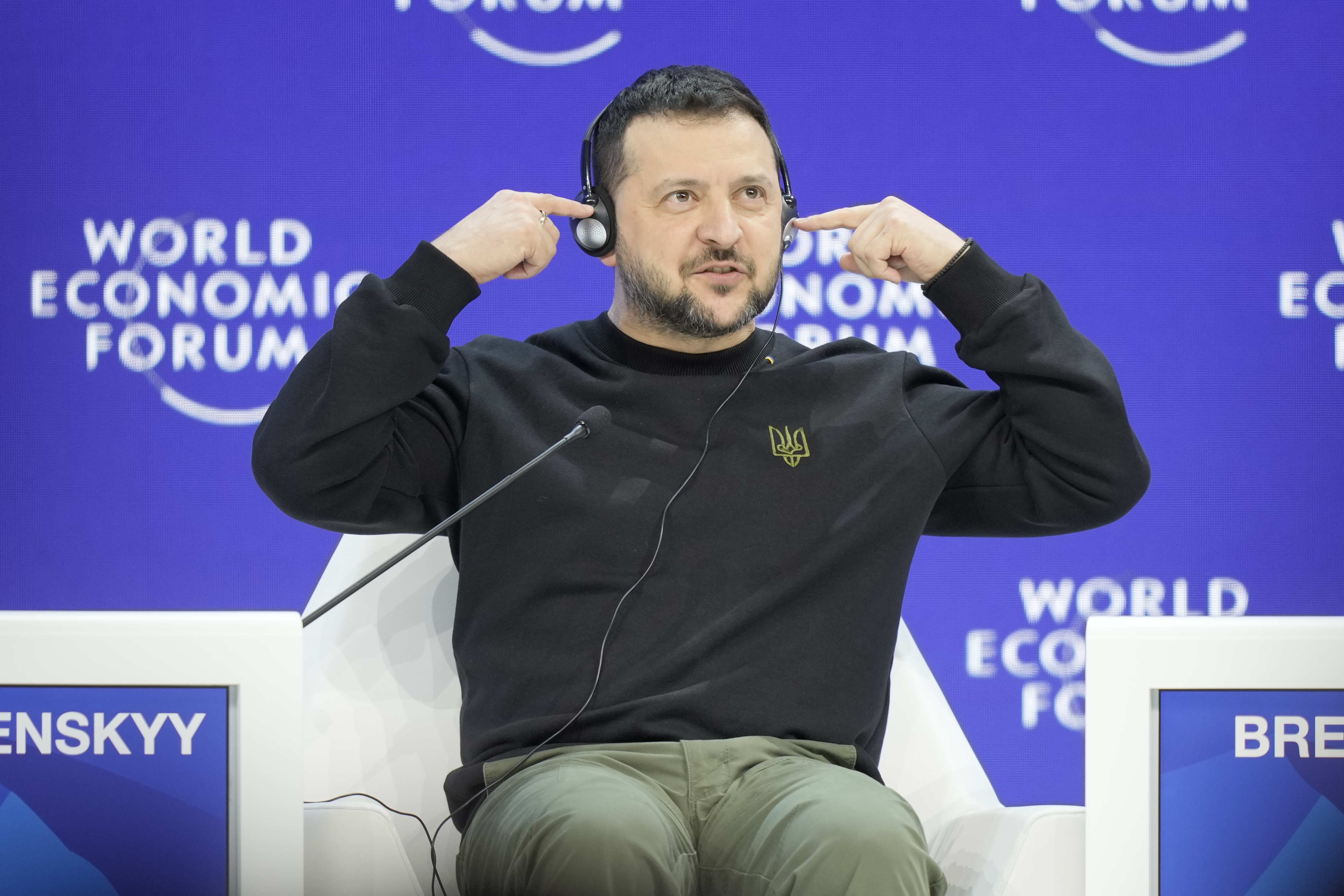Russia’s frozen assets in European accounts are yielding substantial interest payments, and hence potentially earmarked to aid Ukraine’s economy ravaged by war, and now it seems the European Union has moved closer to utilizing these funds for this purpose.
Since Russia’s invasion of Ukraine in February 2022, Western nations have frozen approximately €300 billion ($327 billion) of Moscow’s foreign reserves, with about €200 billion ($218 billion) held within the European Union, primarily at Euroclear, a financial entity safeguarding assets for banks, exchanges, and investors.
EU leaders recently endorsed a critical $50 billion aid package for Ukraine and progressed in finalizing plans to utilize the accumulating profits within Euroclear’s accounts.
In a summit statement, they acknowledged the potential revenue generated from immobilized Central Bank of Russia assets.

Euroclear, headquartered in Belgium, revealed that it had accrued €5.2 billion ($5.6 billion) in interest income from sanctioned Russian assets since their freezing by the EU and G7 countries in 2022.
The EU and its allies are resolute in ensuring Russia contributes to the extensive costs of rebuilding Ukraine, projected at $411 billion over the next decade by the World Bank.
One proposed method involves imposing a special levy to gather the windfall interest income, subsequently funnelling it into the EU budget for Ukrainian reconstruction.
However, concerns regarding legality and financial ramifications have delayed the implementation of this plan.
Some EU member states and the European Central Bank fear potential violations of international law and repercussions on the euro’s stability as a major reserve currency.
Although EU member countries have tentatively agreed to access the windfall interest income, logistical details remain to be resolved. Legal experts are refining the agreement’s text before presenting it for final approval by EU member states.
Euroclear, managing over $40 trillion in assets and facilitating cross-border trades, emphasized its focus on mitigating potential legal and operational risks associated with the proposed fund allocation to Ukraine.
It noted significant administrative costs incurred due to sanctions and highlighted the surge in cash reserves linked to frozen Russian assets.
Payments generated by these assets, such as bond interest or proceeds from reinvested securities, which would typically be directed to Russian bank accounts, are now blocked by sanctions and have accumulated substantial interest, particularly with recent interest rate increases.
Euroclear is entangled in multiple legal disputes concerning these sanctions, primarily within Russian courts, as claimants seek access to blocked assets.
The company continues to retain profits associated with these assets until further guidance is provided on their distribution or management.

Russia’s Strong Warning
Meanwhile, Kremlin Issues Warning Over Use of Frozen Russian Assets for Ukraine.
The Kremlin cautioned Western nations on Monday against utilizing frozen Russian assets as collateral to secure funds for Ukraine, emphasizing that such actions would be deemed illegal and provoke extensive legal battles initiated by Moscow.
According to Kremlin spokesman Dmitry Peskov, any move to use these assets must await official statements, as current reports may contain inaccuracies, reflecting the gravity of the situation.
Following President Vladimir Putin’s deployment of troops into Ukraine in 2022, the United States and its allies imposed sanctions prohibiting transactions with Russia’s central bank and finance ministry, effectively freezing approximately $300 billion in Russian assets held abroad.
Although Russia’s central bank has not provided a detailed breakdown of the frozen assets, estimates indicate significant holdings in various currencies, including euros, U.S. dollars, British pounds, Japanese yen, Canadian dollars, Australian dollars, Singapore dollars, and Swiss francs.
Russia has explicitly stated that any attempt to seize its assets will prompt reciprocal action, potentially affecting U.S., European, and other assets held by Russia.
Concerns persist among Western officials regarding the repercussions of confiscating Russian assets, particularly those invested in government bonds, on the stability of international reserve systems.
Peskov reiterated Russia’s firm stance, asserting that any attempt to seize Russian assets would be met with vigorous legal resistance, challenging the legality and integrity of the economic systems involved.
The Kremlin remains vigilant, closely monitoring developments and emphasizing the consequences of any actions taken by decision-makers regarding frozen Russian assets.

The Policy Dilemma
Over two years since Russia initiated its full-scale invasion of Ukraine in February 2022, the issue of providing financial assistance to Kyiv has grown increasingly pressing.
Despite the considerable delay in the EU’s approval of a new long-term aid package and the United States’ ongoing deliberations, there’s a suggestion to address this by confiscating the $300 billion of Russian assets currently frozen in Western accounts and redirecting them to Ukraine.
However, while this move could be advantageous in funding Kyiv’s wartime necessities and is morally sound, it also entails certain risks.
Both Ukraine and Western nations agree that Russia should not regain control of its assets until it ceases its hostilities, relinquishes all occupied territories, and provides reparations.
At the same time, Western governments hesitate to burden their taxpayers—already grappling with inflation and economic downturns—by funding Ukraine’s war efforts when potentially enemy resources could cover them.
Hence, the proposal has garnered significant support, particularly from Washington (following Kyiv’s endorsement). The White House is endorsing legislation permitting the seizure of Russian assets frozen in the United States to aid Ukraine, akin to the precedent set with the seizure of Iraqi assets in 2003.
Nevertheless, the majority of Russia’s frozen assets are situated in Europe, predominantly in Germany, France, and notably Belgium, where over half of Russia’s frozen assets reside in the custody of Euroclear, a depositary and clearinghouse.
However, European governments, lacking a precedent, are hesitant to seize assets from a nation with which they are not formally at war.
Primarily, they are concerned that such actions may dissuade investment in European assets from sovereign wealth funds, central banks, corporations, and private investors from the Global South.
A potential exodus of investments in euros could lead to severe ramifications, including increased borrowing costs, inflation, and decreased tax revenues.

Really So?
Upon closer examination, the severity of these threats might be overstated.
Entities with motives to reconsider their investment strategies likely did so back in February–March 2022 following the freezing of Russian assets. At that time, there was no significant capital outflow due to the absence of viable alternatives to Western assets and currencies.
Despite the lack of panic-driven dumping of foreign assets from Europe and other Western nations two years later, the potential consequences of such an outcome are dire enough to warrant caution from Europe’s central banks, prompting them to await careful deliberations and calculations.
Legal concerns also arise.
Russia would inevitably contest the seizure of its assets in court, resulting in a freeze of funds for both Moscow and Kyiv until the case is resolved.
Proposals to prevent national courts from adjudicating such cases, as suggested by some U.S. senators, risk undermining public confidence in the legal system, as does the failure to penalize an aggressor for violating international law.
The Larger Picture
The economic argument against asset seizure is more complex to refute.
Moscow has cautioned that seizing its assets could prompt retaliatory measures, such as the confiscation of remaining Russian assets from companies deemed “unfriendly” by Russia.
Western investors in the Russian economy have already borne the brunt of frozen Russian assets; their funds are currently trapped in Russia, effectively serving as currency reserves due to Russia’s 2022 ban on capital withdrawals.
Thus, there appears to be no need to counteract capital flight when the capital is unable to flee in the first place.
Some argue that there’s little cause for concern, citing the inherent risk involved in high-yield investments, particularly in emerging markets like Russia where the threat of sanctions has loomed for years.
However, this argument, rooted in a core tenet of capitalism – that risk accompanies profit – reveals a significant flaw.

A Disastrous Step
Writing off Russian assets would spell disaster for numerous Western firms of systemic importance.
The bailout of companies like Euroclear would inevitably incur greater costs for European governments than direct aid to Ukraine.
While an exchange of frozen assets seems the most pragmatic solution, the impasse persists with no party willing to make the first move.
Even if Russia’s frozen assets were confiscated, the method of transferring them to Ukraine remains unclear.
One option is to liquidate all bonds and provide the proceeds. However, this could drive up military equipment costs and diminish demand for European debt, thereby escalating government expenditures and potentially necessitating cuts in defense and aid to Ukraine.
Alternatively, according to reports circulating among G7 nations, the assets could serve as collateral for bonds.
Under this plan, Ukraine’s allies would demand repayment from Russia; failure to comply would result in the assets’ confiscation; this approach would raise funds and regulate the flow of money while mitigating many of the risks above, as Russia’s assets would technically remain unclaimed until bond repayment.
However, finding buyers for these bonds poses a challenge.

Central banks are unlikely to intervene, considering it akin to quantitative easing policies of past crises.
Likewise, commercial banks may hesitate to purchase bonds without guarantees from Western governments, making this transfer method costly for the West and its taxpayers.
Yet, if Ukraine’s victory is crucial for Western security, some argue it’s a fair cost.
Currently, an interim measure has been agreed upon: a 100 percent tax on income generated by frozen Russian assets, expected to yield only $5-6 billion annually.
While this move is unlikely to provoke Russia to nationalize assets or prompt foreign investors to divest from euros, its impact is limited.
Weighing The Risks
Given the substantial risks involved, European governments are unlikely to succumb to U.S. pressure to seize Russia’s frozen assets in the near term, perhaps rightly so.
Presently, European and American leaders persist in advocating for new long-term aid packages for Kyiv, despite facing domestic challenges. The primary obstacle in supplying arms to Ukraine remains limited production capacity, not funding.
Hence, the future of long-term aid remains uncertain, contingent on the outcome of the upcoming election cycle.
If necessity outweighs risk at any point, discussions about appropriating Moscow’s assets may resurface, potentially leading to their seizure.
However, until then, it may be prudent to keep this option in reserve.




